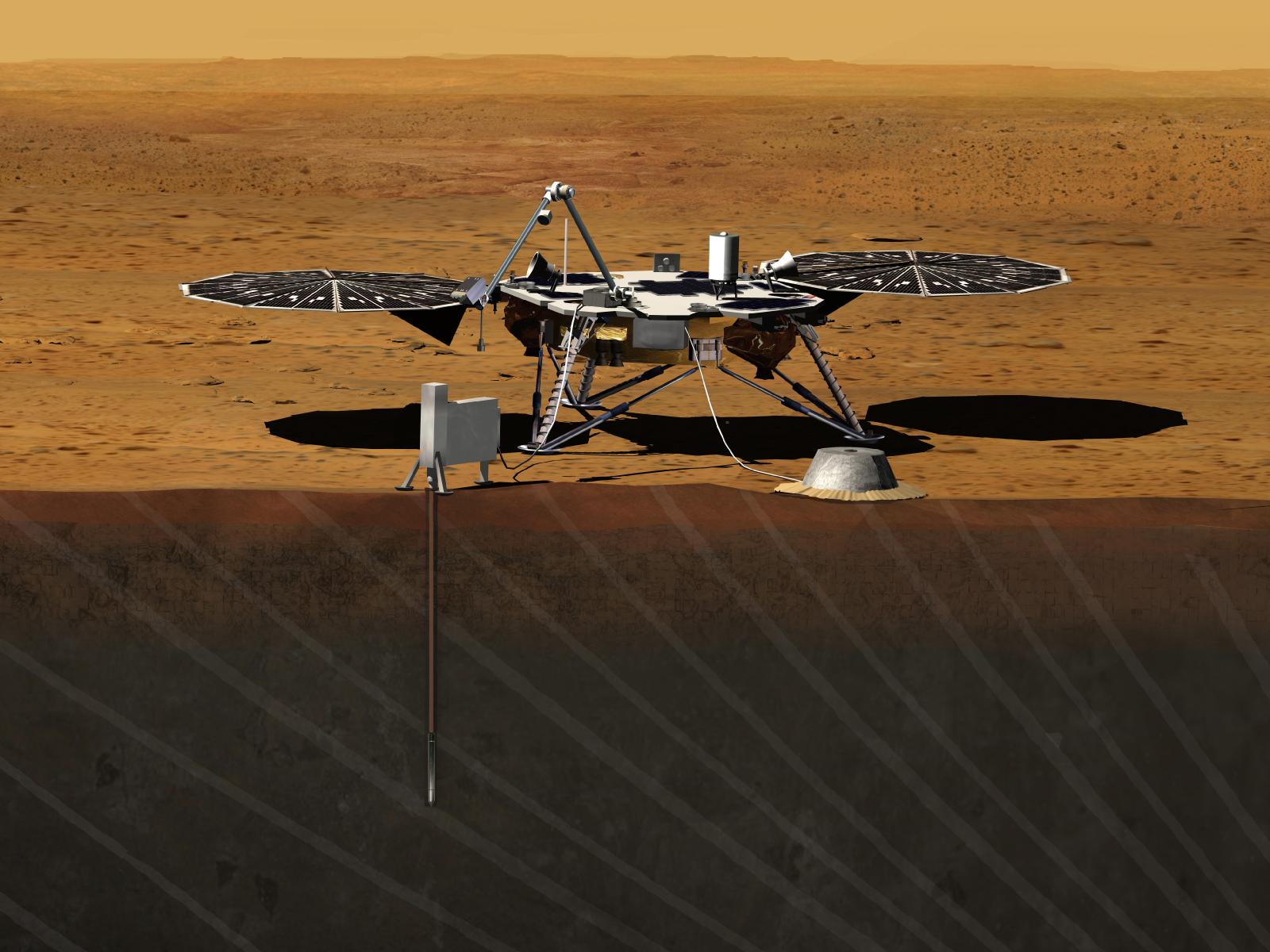
This story was updated at 6:40 p.m. EDT.
NASA's next low-budget planetary mission will land a probe on Mars in 2016 to study why the Red Planet went down such a different evolutionary path than Earth did, the agency announced today (Aug. 20).
The new mission, called InSight, will attempt to determine whether Mars' core is liquid or solid, and why the Red Planet's crust does not appear to be composed of drifting tectonic plates like Earth's is. Such information could help scientists better understand how rocky planets form and evolve, researchers said.
"InSight will get to the 'core' of the nature of the interior and structure of Mars, well below the observations we've been able to make from orbit or the surface," John Grunsfeld, associate administrator for NASA's Science Mission Directorate, said in a statement.
A low-cost Mars mission
InSight — short for Interior exploration using Seismic Investigations, Geodesy and Heat Transport — is the latest of NASA's Discovery-class missions, and its cost will be capped at $425 million in 2010 dollars (excluding the launch vehicle). [Mars InSight Lander Mission Revealed (Gallery)]
The mission will be led by Bruce Banerdt of NASA's Jet Propulsion Laboratory in Pasadena, Calif. Insight is slated to launch in March 2016 and put a lander on Mars in September of that year to begin its two-year science mission.
Get the Space.com Newsletter
Breaking space news, the latest updates on rocket launches, skywatching events and more!
The lander will carry four instruments, which will determine Mars' rotation axis and measure the seismic waves and heat flowing through and from the planet's interior. The craft will also sport a robotic arm and two cameras, researchers said.
Insight beat out two other finalists to become NASA's 12th Discovery-class mission. The other two contenders were Comet Hopper, which would have landed on a comet multiple times to study how the body changed on its trip around the sun, and the Titan Mare Explorer, or TiME.
TiME would have dropped onto the methane-ethane seas of Saturn's huge moon Titan, providing the first direct exploration of an ocean beyond Earth.
All three finalists offered great scientific potential, officials said. But InSight builds on technology used in NASA's Phoenix lander mission, which confirmed the presence of subsurface water ice near the Martian north pole in 2008.
That heritage — along with key contributions on science instruments from the French and German space agencies — helped swing the decision InSight's way, convincing NASA that the mission could stay within its relatively low budget.
"One of the major factors for both Comet Hopper and for the Titan Mare Explorer, you know, were cost risks — cost and schedule risks," Grunsfeld told reporters today.
"The InSight mission had the highest probability — by enough margin that it distinguished itself — that it could actually be accomplished under the cost constraints that we have, and on the schedule," Grunsfeld added. "I don't think I need to tell you that in the current fiscal environment that's really a very important element, all other things being equal, as they were."

Back to the Red Planet
The selection of InSight may help reaffirm NASA's dedication to Mars exploration despite recent financial troubles. The White House's proposed 2013 federal budget cuts the agency's planetary science efforts by 20 percent, with much of the funding coming out of the Mars program.
As a result, NASA dropped out of the European-led ExoMars mission — which aims to launch an orbiter and a rover to the Red Planet in 2016 and 2018, respectively — and has begun downscaling its Mars program.
"The exploration of Mars is a top priority for NASA, and the selection of InSight ensures we will continue to unlock the mysteries of the Red Planet and lay the groundwork for a future human mission there," NASA Administrator Charles Bolden said in a statement.
"The recent successful landing of the Curiosity rover has galvanized public interest in space exploration, and today's announcement makes clear there are more exciting Mars missions to come," Bolden added.
You can follow SPACE.com senior writer Mike Wall on Twitter: @michaeldwall. Follow SPACE.com for the latest in space science and exploration news on Twitter @Spacedotcom and on Facebook.
Join our Space Forums to keep talking space on the latest missions, night sky and more! And if you have a news tip, correction or comment, let us know at: community@space.com.

Michael Wall is a Senior Space Writer with Space.com and joined the team in 2010. He primarily covers exoplanets, spaceflight and military space, but has been known to dabble in the space art beat. His book about the search for alien life, "Out There," was published on Nov. 13, 2018. Before becoming a science writer, Michael worked as a herpetologist and wildlife biologist. He has a Ph.D. in evolutionary biology from the University of Sydney, Australia, a bachelor's degree from the University of Arizona, and a graduate certificate in science writing from the University of California, Santa Cruz. To find out what his latest project is, you can follow Michael on Twitter.









